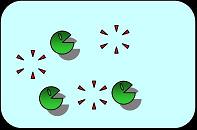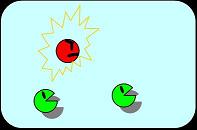Tokyo/Model
From 2007.igem.org
(Difference between revisions)
(→E.coli Follows Pareto's principle!) |
(→E.coli Follows Pareto's principle!) |
||
| Line 7: | Line 7: | ||
---- | ---- | ||
| - | <br>As shown in Fig. 1, 2, and 3, the condition of the system is changing as follows:<br> | + | <br>As shown in Fig. 1, 2, and 3, the condition of the system is changing as follows:<br><br> |
'''Bistable state ⇒ The removal of A (worker) ⇒ Regain of "stable coexistence''' | '''Bistable state ⇒ The removal of A (worker) ⇒ Regain of "stable coexistence''' | ||
| - | <br> | + | <br><br> |
[[Image:model1.jpg|thumb|250px|'''Fig. 1 Condition 1. Bistable state''' <br>The system is stable when it contains both A (worker) and B (idler) at certain ratio.|left]] | [[Image:model1.jpg|thumb|250px|'''Fig. 1 Condition 1. Bistable state''' <br>The system is stable when it contains both A (worker) and B (idler) at certain ratio.|left]] | ||
Revision as of 14:59, 25 October 2007
Abstract Concept & Model Requirements Genetic_circuit Works About_our_team
E.coli Follows Pareto's principle!
To follow Pareto’s principle like an ant society, our model system must follow the three conditions shown in Fig. 1 to 3. In our model, all individual cells have the same genetic circuits but take two states, A (worker) and B (idler), depending on the surrounding circumstances.
As shown in Fig. 1, 2, and 3, the condition of the system is changing as follows:
Bistable state ⇒ The removal of A (worker) ⇒ Regain of "stable coexistence


